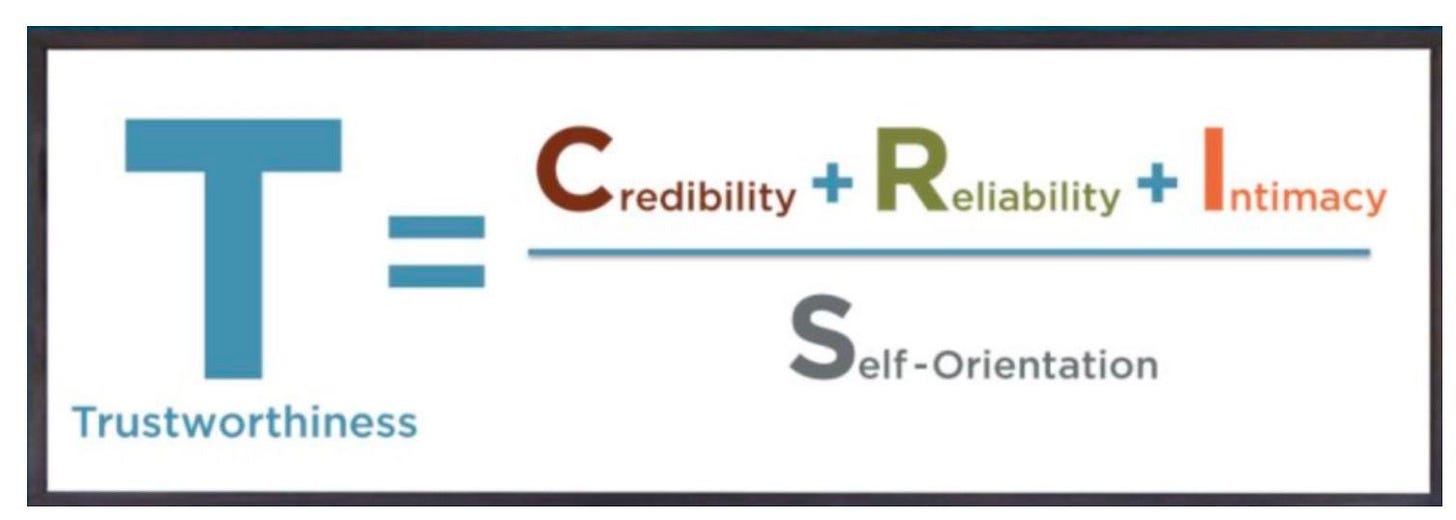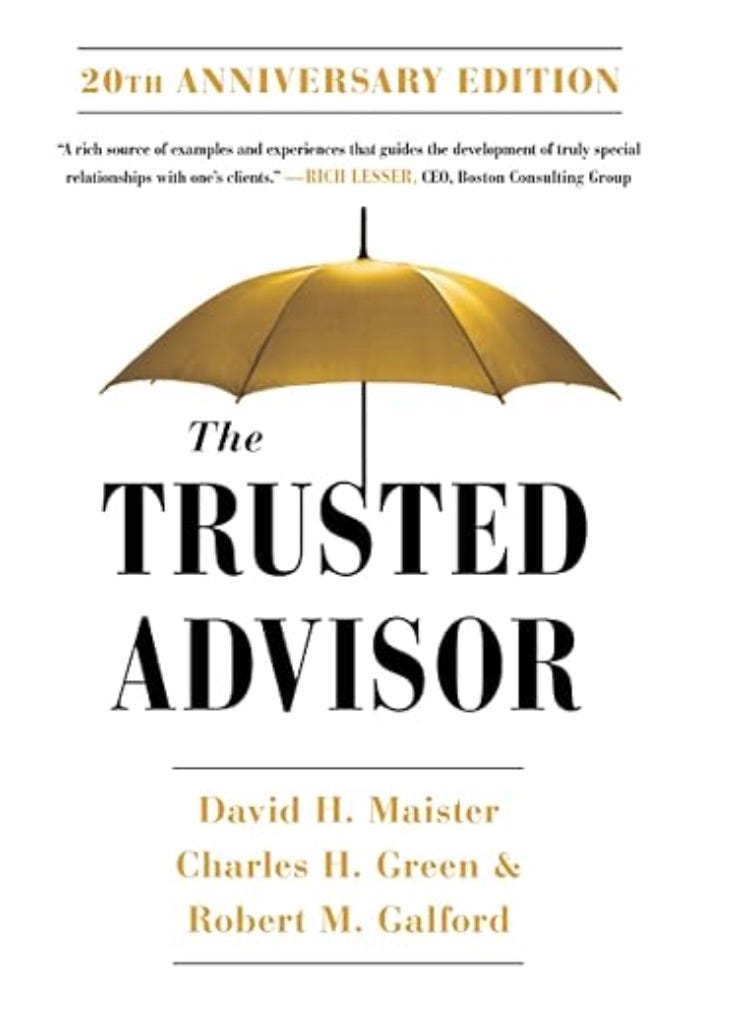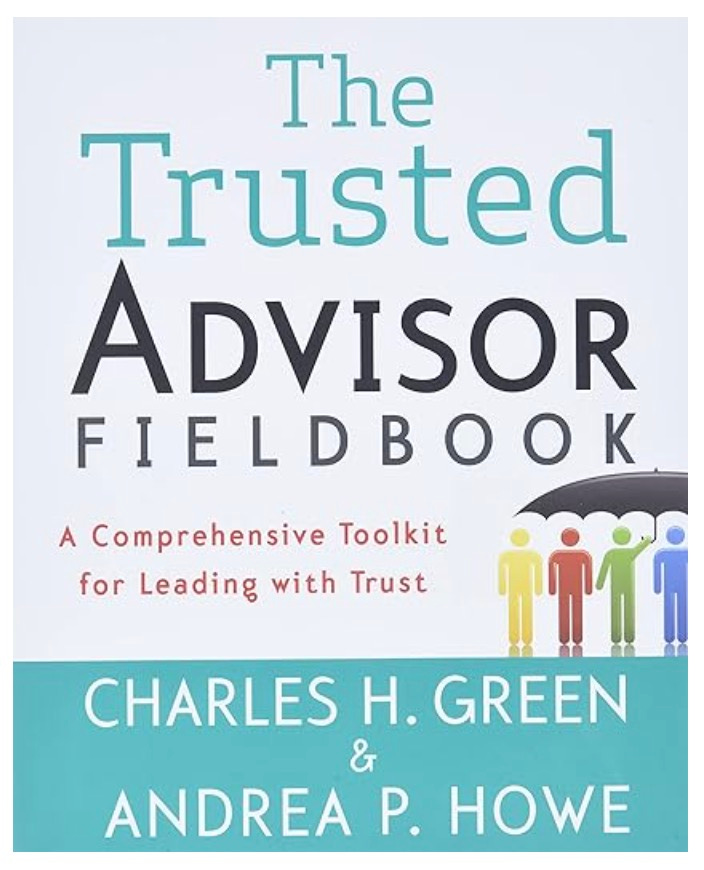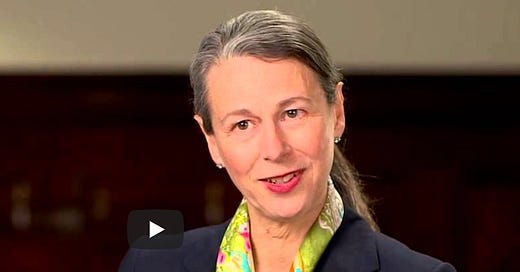🚩 The Trust Equation Formula - TRUST-able #24 - Sep/Oct 2023
Strategies and tactics to gain trust for indie entrepreneurs.
Hello,
welcome to a new special edition of TRUST-able.
New format, new content, more focus, more depth.
It has taken me some time, yes, but I wasn’t in a hurry.
After 24 issues (2 years) of TRUST-able I have learned a few lessons and I am ready to start with a new format and direction.
The goal is to be more useful on the very topic that inspired you to subscribe to this newsletter: TRUST.
How to grow it, obtain it, cultivate it, get it, become worthy of it.
I have realized that notwithstanding the good quality links, insights and resources I have been sharing all along, there’s just too much I put on the table. And not only it gets harder to consume, but more than anything, there’s so much good stuff in what I share, that one gets confused on where to start or how to apply it in real life.
I realize that.
Thank you for having had the patience to wait for me to come to terms with this.
The new format has a few characterizing traits:
Focus
In this new newsletter format the focus is only on building, creating and obtaining TRUST.One Idea
Each issue dwells only on one specific tactic/idea/strategy to TRUST-building.Practical Advice
I share with you simple, practical advice on how to implement the tactic/strategy and - where possible - the exact steps to make it successful.
Ready to dive?
Focus of the first issue is on the Trust Building Formula, an equation that allows you to synthesize and easily remember:
which are the essential ingredients to gain trust and
how to anticipate where you may get in the way to obtain it.
N.B.: There are two language editions of this newsletter:
The original English language edition and the Italian version.
To get in touch with me, Robin Good, just email me at:
Robin.Good@masternewmedia.org
I am here to make friends.
Follow a path with a heart.
The time is NOW.
Robin Good
The Trust Equation Formula
Technical mastery of one’s discipline is not enough to obtain professional success. What is needed is the ability to earn the trust and confidence of others.
The trust equation is a simple formula that allows you to understand and remember which are the three critical factors to obtain trust, as well as the one key element (self-orientation - focus on one own self) that can deeply limit it.
Here it is:

Credibility, reliability and intimacy are the three powerful factors that most contribute to your ability to gain trust from others.
Self-orientation or your focus on yourself is on the other hand, the key element that can greatly limit or even cancel out your ability to be perceived as a trustworthy person.
In its essence, being trustworthy means:
If I trust you, I believe that you’re going to:
a) look after me and my interests,
b) take my interests to heart and
c) make decisions about them like I would.
Source: Charles H. Green - “Understanding The Trust Equation for Business Professionals”
Duration: 3’:49”
There are several books in print that talk and explain how to gain trust, but there are a couple of them that I would consider the key references for any serious scholar of this matter.
These are:


Inside these two books the authors dissect the rational (credibility and reliability) and emotional (intimacy) components of trustworthiness and many of the specific actions needed to cultivate them.
Among these:
a. to engage
engaging the customer to get to know him/her and to deeply understand his context, background and key needs
b. to listen
listening closely to his stories, frustrations and requests to better understand and identify potential appropriate solutions
c. to frame
framing each problem to be solved inside the specific client work context, avoiding to apply standardized diagnosis and solutions
d. to envision
envisioning how different solutions could match your customer needs as well as prospecting the various consequences and the pros and cons of each
e. to commit
committing to a specific set of strategies and actions and then following up with them in a timely fashion.
Practical Advice
How To Put In Practice the Trust Equation Formula
(based on my personal experience and on the advice found in the book “The Trusted Advisor”)
a) To Gain Credibility
1) Anticipate Client Needs
Uncover issues, needs and problems that your clients may or will run into much before they realize it. Talk and illustrate them to your customers before they become serious issues while offering them alternative solutions and courses of actions.
2) Have a Trustworthy About Page
Make sure your website has an About page that provides complete information about you and that includes at the very least:
Your academic background
Your professional achievements
Your key interests and hobbies
Your ideals and values (what you live for)
A bit of personal information (where you live, family, hobbies, goals, etc)
Your face (don’t hide behind a logo)
Your name, last name and signature
Making this type of information public and easy to find shows you are transparent, have nothing to hide and that you are a unique human being who has traits and values that go beyond the desire to sell and to make a profit.
3) Collect Testimonials Systematically
Integrate in your standard professional workflow a standard procedure to get satisfied customer testimonials. The procedure should auto-activate itself every time you have a very satisfied customer, independently of the type of service you have provided to them.
Showcasing credible, authentic and human-sounding testimonials on your communication channels, which pinpoint and highlight the specific traits, actions and attitudes that make you unique and valuable to your customers, is the best and fastest way to communicate your trustworthiness to others.
b) To Gain Reliability
1) Make Small Commitments
Commit to specific actions regarding small tasks and promptly carry them out. Provide results before your customer asks for them.
- Ensure the article is delivered by tomorrow,
- Make the call as promised,
- Writing a new draft by Monday,
- Provide the reference promptly.
Then, fulfill these promises quietly and on time.
2) Follow-up
Timely follow-up on what you have discussed and have committed to do. If you start things, suggest new ideas, propose changes and improvements, but then (for whatever reason) you don’t follow up with them, what gets communicated is that you’re a brilliant person with lots of good ideas, but you’re not a reliable, 100% trustworthy person. That’s why it should be your responsibility to always list what you and your customers next steps and responsibilities will be. You should be the one to remind your customers of important things that need to be done while never letting the reverse happen.
3) Be Consistent
Be consistent, show up on time, don’t change appointments at the last minute. “Reliability is the repeated experience of links between promises and action.”
c) To Gain Intimacy
When it comes to earning trust in business, Intimacy tends to be the skill that most entrepreneurs have been developing the least. Yet, at least if compared to Credibility and Reliability, it’s the most powerful one and as such can become one of the most powerful competitive advantages.
1) Care
Unload unnecessary weights from your customer shoulders. Show that you truly care by eliminating or drastically reducing tedious or difficult tasks that you can take over.
2) Anticipate
Always anticipate your customers upcoming needs and obstacles and take specific actions and remedies to minimize their negative impact on them.
3) Manage
Act as if you were also your customer secretary for everything that relates to the business your conducting together. For example: “Reconfirm scheduled events before they happen. Announce changes to scheduled or committed dates as soon as they change.”
4) Get Interested
Learn as much as you can about your client activities and key events in his life, both professional and personal. Learn the names of his staff, close acquaintances and of his friends / family. These info, will allow you to relate and superimpose some of the issues you will be discussing with your customers to their context and experience, facilitating their understanding and making you being perceived as part of those intimate circles.
5) Personalize
Understand and support your client’s preferences. Adjust to his specific needs, and keep active open ears in discovering more and more of them. The positive consequence of acting in this way, is that as you do so it will become increasingly harder for your customer to consider replacing you with a competitor.
6) Communicate Directly
Be direct. Avoid being too formal, too corporate, too academic or detached. Trust needs close-contact communications. Communicate in person and in writing by using “I and You” and avoiding the use of “we” and “you” as in “all your people”.
7) Write Like You Talk
Use a style of written communication that is clear of technical jargon. Avoid language that is too difficult to comprehend for someone who doesn’t have your same know-how. Writing like you normally speak can greatly help in this effort.
8) Listen More
Don’t be the one that is always talking, giving advice and suggesting solutions. Invest time in listening closely to your customer needs with the goal of understanding more of their business and the specific obstacles being encountered. Only when you have understood these in depth, gently offer potential alternatives “to take into consideration”, or solutions that have successfully worked in similar situations with other clients.
9) Ask
To enhance listening, be pro-active in asking questions that elicit more detail and insight from your customers. Become ever more curious (without being invasive) and interested in your customer work.




